
| IDM/MSR 1967 Installations : 20 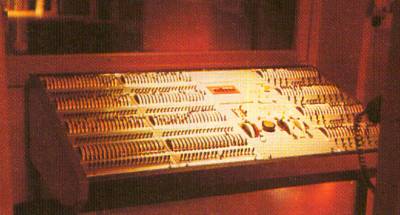 |
The world's first memory lighting control, the IDM/DL arose out of the need to advance from a three preset manual fader desk to a means of recording the fader levels and instantly reproducing them in performance. The first installation in June 1968 in Schweinfurt, was followed by Budapest Opera and the Coliseum, London. With it's push-button IDM/R variant (the prototype of the DDM) and the later redesigned MSR system, 20 systems were installed around the world. |
| DDM 1971 Installations : 18 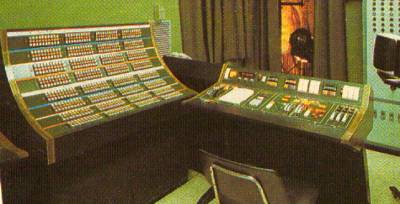 |
The operational advantages of IDM's recorded presets were hampered by the cumbersome procedure required to re-record a modified lighting state. A system which addressed this problem whilst retaining immediate access to any channel was the push button version of IDM (the /R for Rocker switch) which became the conceptual prototype for the first software computer lighting control. The DDM (Digital Dimmer Memory) was developed for the Royal Shakespeare Theatre, Stratford-upon-Avon, but immediately became recognised as the major world-class memory lighting control. |
| MMS 1973 Installations : 208 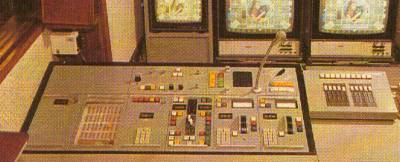 |
MMS (Modular Memory System) was the first mass produced memory console and jumped two hurdles in a single stride: it took full advantage of low-priced integrated circuit technology, and dispensed with a rocker switch per channel in favour of a calculator keypad and wheel, to control up to 480 channels. A range of user selectable modules gave theatres and TV studios in 30 countries the chance to light with a custom-designed control at an affordable price. |
| Compact 1975 Installations : 108 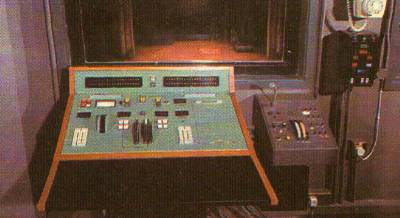 |
The overwhelming success of MMS led to a smaller, transportable , compact MMS system with fixed facilities for up to 120 channels. Three versions of the Compact were produced and supplied to theatres and television companies worldwide. |
| Lightboard 1976 Installations : 11 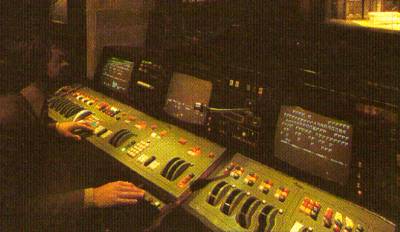 |
The exacting production schedules forecast for London's National Theatre led Richard Pilbrow, its consultant, and chairman of Theatre Projects, to develop the concept for a fully saturated lighting rig, controlled by highly spohisticated purpose-designed lighting control. Lightboard pioneered control of 1000 channels, total control of lighting intensity, position and colour, the powerful latest-action-takes-precedence principles and multiple timed fades. |
| Duet 1978 Installations : 500+ 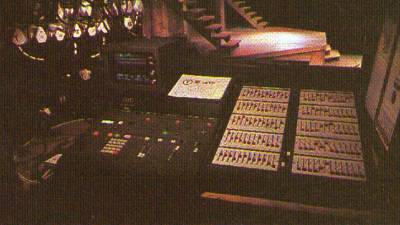 |
A "child" of the microprocessor revolution of the mid 1970's. Duet was the first "off-the-shelf" packaged memory lighting system. Controlling up to 120 channels, the desk-top sized Duet performed as both a permanent and portable memory control for provincial and major theatres, TV studios and hire companies around the world. |
| Galaxy 1980 Installations : 300+ 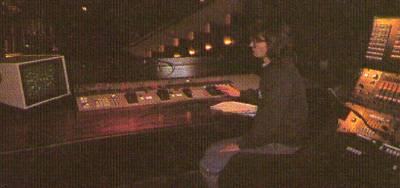 |
The first generation
of Galaxy capitalised on its advantages of modular control, and brought
MMS operational philosophy up to date with simple direct control of up to
768 channels, multi-part timed fades, colour VDUs and a host of options,
allowing a theatre to contruct the ideal control for its facility. Continued development led to Studio Galaxy, the first memory system to address the unique needs of television production with enhanced manual playback and multiple channel controllers. |
| Tempus M24 1983 Installations : 800+ 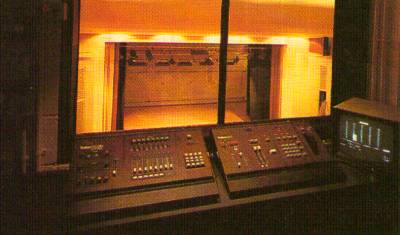 |
M24 introduced the advantages of memory control to smaller installations. Strand's unique experience in memory lighting development was now bringing handsome benefits to lighting designers everywhere! From IDM came the concept of recording from an associated fader wing, from MMS the wheel and keypad control, from Lightboard the multipart fade. Speed of operation and simplicity of control have made M24 an international success in the professional and amateur theatre, and with TV and hire companies. |
| Gemini 1984 Installations : 300+  |
As with MMS and Compact, the operational advantages and popularity of the large, multi-channel Galaxy led directly to a smaller, transportable version. Originally introduced at 180 channels, Gemini offered many of Galaxy's features, including the most comprehensive programmable special effects package in the indistry, and all for a modest price. |
 |
|